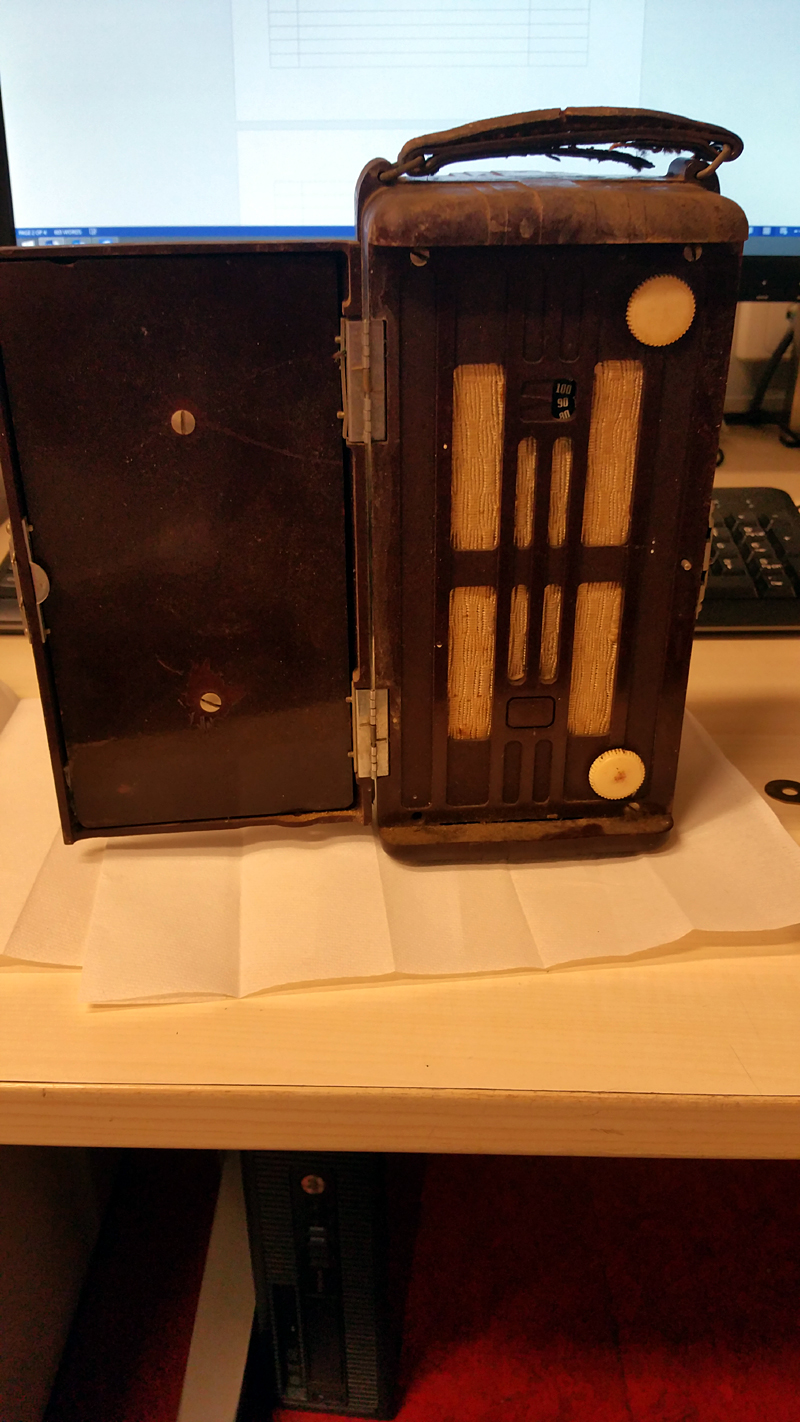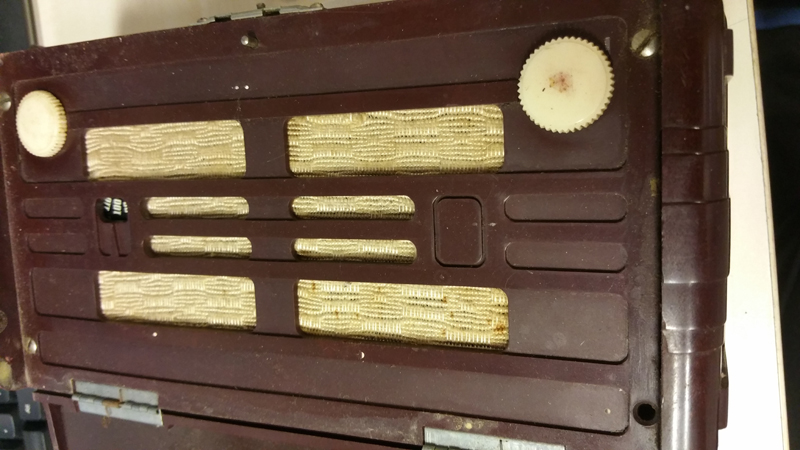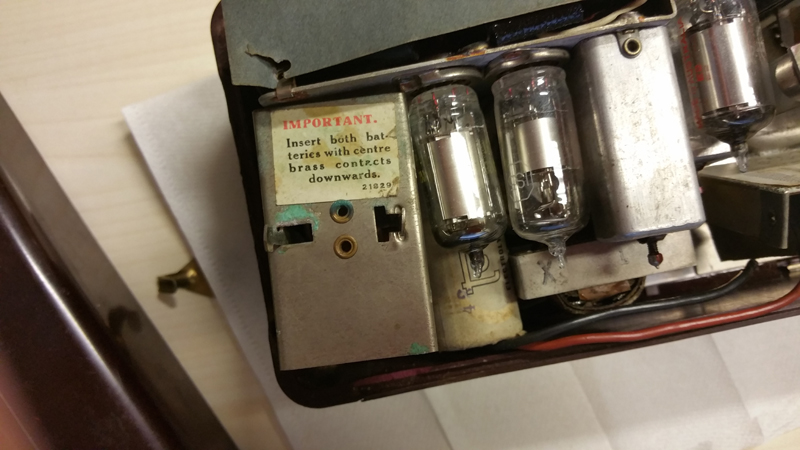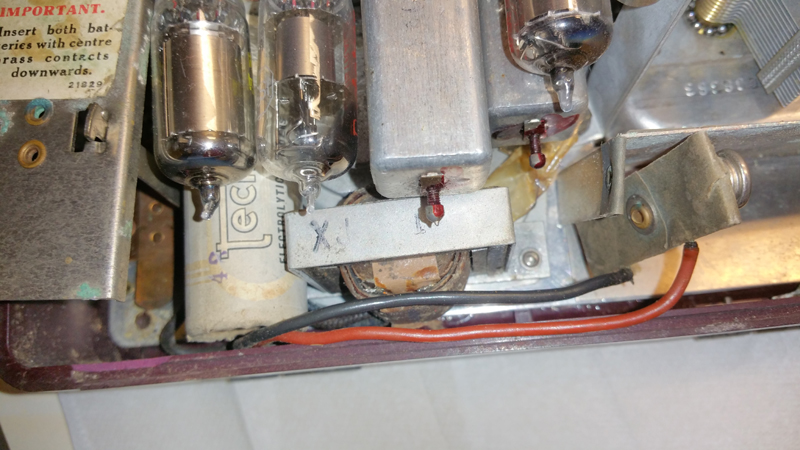General Discussion
Forum home - Go back to General discussion
|
AWA 450P
|
|
|
« Back ·
1 ·
Next »
|
|
|
Return to top of page · Post #: 1 · Written at 9:39:19 PM on 4 October 2016.
|
|
|
|
Location: Latham, ACT
Member since 21 February 2015 Member #: 1705 Postcount: 2216 |
|
Wow I have wanted one of these for ages. It arrived today from ebay and cost me about 80 bucks including postage. I have sent some pics to Brad. it looks very clean and I cant envisage any issues getting it going. Any advice welcome thanks guys.     |
|
|
Return to top of page · Post #: 2 · Written at 10:05:23 PM on 5 October 2016.
|
|
|
|
Administrator
Location: Naremburn, NSW
Member since 15 November 2005 Member #: 1 Postcount: 7548 |
|
Whilst replacing capacitors is still probably a good idea it'll probably work from the word 'go'. ‾‾‾‾‾‾‾‾‾‾‾‾‾‾‾‾‾‾‾‾‾‾‾‾‾‾‾‾‾‾‾‾‾‾‾‾‾‾‾‾‾‾‾‾‾‾‾‾‾‾‾‾‾‾‾‾‾‾‾‾‾‾‾‾‾‾‾‾ A valve a day keeps the transistor away... |
|
|
Return to top of page · Post #: 3 · Written at 10:21:25 PM on 5 October 2016.
|
|
|
|
Location: Latham, ACT
Member since 21 February 2015 Member #: 1705 Postcount: 2216 |
|
Brad I am guessing that one of the lid hinges is actually part of the antenna circuit . Is that the case. |
|
|
Return to top of page · Post #: 4 · Written at 10:34:44 PM on 5 October 2016.
|
|
|
|
Administrator
Location: Naremburn, NSW
Member since 15 November 2005 Member #: 1 Postcount: 7548 |
|
I'm guessing now but I think both hinges play a role. A quick look under the cover on the inside of the lid will confirm either way. ‾‾‾‾‾‾‾‾‾‾‾‾‾‾‾‾‾‾‾‾‾‾‾‾‾‾‾‾‾‾‾‾‾‾‾‾‾‾‾‾‾‾‾‾‾‾‾‾‾‾‾‾‾‾‾‾‾‾‾‾‾‾‾‾‾‾‾‾ A valve a day keeps the transistor away... |
|
|
Return to top of page · Post #: 5 · Written at 10:17:50 AM on 6 October 2016.
|
|
|
|
Location: Belrose, NSW
Member since 31 December 2015 Member #: 1844 Postcount: 2629 |
|
I have a couple of these radios, a rough brown one and a pristine white one. My white one still has all the original black paper caps. All I had to do to it was repair a corroded speaker flex wire and replace a short-circuited electro (same brand as the one in yours). I pulled the guts out and fitted a modern part inside the original can. |
|
|
Return to top of page · Post #: 6 · Written at 7:22:21 PM on 6 October 2016.
|
|
|
|
Location: Latham, ACT
Member since 21 February 2015 Member #: 1705 Postcount: 2216 |
|
Thanks for that Ian . I haven't really assessed it yet but I am thinking I would like to get hold of a 467 Battery kit, I think they are available but hard to find . On the other hand how did you clip the batteries together. There is no sign of acid damage , in fact it looks nice and clean in side. Ian can you tell me is one or both of the hinges part of the antenna circuit, I can see one wire that looks to be clamped to the top hinge but should both be in the circuit. Thanks buddy. |
|
|
Return to top of page · Post #: 7 · Written at 8:37:41 PM on 6 October 2016.
|
|
|
|
Administrator
Location: Naremburn, NSW
Member since 15 November 2005 Member #: 1 Postcount: 7548 |
|
On the other hand how did you clip the batteries together. ‾‾‾‾‾‾‾‾‾‾‾‾‾‾‾‾‾‾‾‾‾‾‾‾‾‾‾‾‾‾‾‾‾‾‾‾‾‾‾‾‾‾‾‾‾‾‾‾‾‾‾‾‾‾‾‾‾‾‾‾‾‾‾‾‾‾‾‾ A valve a day keeps the transistor away... |
|
|
Return to top of page · Post #: 8 · Written at 9:45:00 PM on 6 October 2016.
|
|
|
|
Location: Latham, ACT
Member since 21 February 2015 Member #: 1705 Postcount: 2216 |
|
I am thinking about getting rechargeable from Jaycar. Yes a little expensive but cheap over time .just want to hear this baby. |
|
|
Return to top of page · Post #: 9 · Written at 3:26:51 AM on 7 October 2016.
|
|
|
|
Location: Latham, ACT
Member since 21 February 2015 Member #: 1705 Postcount: 2216 |
|
Found a store in the UK that has cardboard printed copies of some of the old radio batteries . here is there link http://www.classicradioshop.info/s/img/em. I also have found some hardware on Ebay to help you to neatly clip the 9 volt batteries inside the cardboard shells. I will get Brad to put it up when I work out how to send it. |
|
|
Return to top of page · Post #: 10 · Written at 9:37:11 AM on 7 October 2016.
|
|
|
|
Location: Hill Top, NSW
Member since 18 September 2015 Member #: 1801 Postcount: 2194 |
|
http://www.classicradioshop.info/s/img/em |
|
|
Return to top of page · Post #: 11 · Written at 10:25:11 AM on 7 October 2016.
|
|
|
|
Location: Cameron Park, NSW
Member since 5 November 2010 Member #: 770 Postcount: 425 |
|
I would not recommend using rechargeable batteries for the A supply, they are nominally 1.2V vs 1.5V for regular batteries. I think there would be a significant drop in performance with a lower filament supply. |
|
|
Return to top of page · Post #: 12 · Written at 12:43:54 PM on 7 October 2016.
|
|
|
|
Location: Belrose, NSW
Member since 31 December 2015 Member #: 1844 Postcount: 2629 |
|
Wow, a lot to answer! |
|
|
« Back ·
1 ·
Next »
|
|
|
You need to be a member to post comments on this forum.
|
|

Sign In

Vintage Radio and Television is proudly brought to you by an era where things were built with pride and made to last.
DISCLAIMER: Valve radios and televisions contain voltages that can deliver lethal shocks. You should not attempt to work on a valve radio or other electrical appliances unless you know exactly what you are doing and have gained some experience with electronics and working around high voltages. The owner, administrators and staff of Vintage Radio & Television will accept no liability for any damage, injury or loss of life that comes as a result of your use or mis-use of information on this website. Please read our Safety Warning before using this website.
WARNING: Under no circumstances should you ever apply power to a vintage radio, television or other electrical appliance you have acquired without first having it checked and serviced by an experienced person. Also, at no time should any appliance be connected to an electricity supply if the power cord is damaged. If in doubt, do not apply power.
Shintara - Keepin' It Real · VileSilencer - Maintain The Rage
